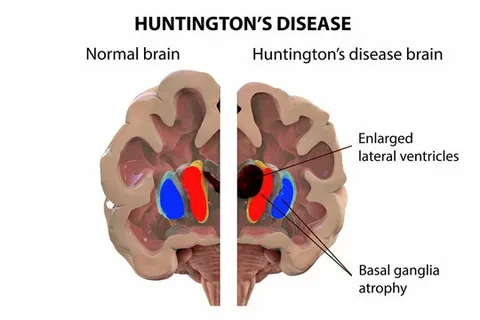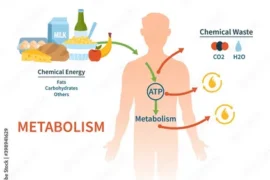Introduction
Huntington’s disease is a progressive, inherited neurodegenerative disorder that affects the brain’s basal ganglia, causing the gradual loss of motor, cognitive, and psychiatric function. Traditionally, managing Huntington’s disease has been limited to symptomatic treatments, with no available cures.
However, recent scientific advancements are changing the landscape of treatment options. A pioneering group of researchers has introduced the first polymer-based therapeutic specifically targeted to Huntington’s disease, opening a new frontier in the search for a treatment that goes beyond managing symptoms.
This blog post explores this breakthrough in Huntington’s disease treatment, delving into the research behind polymer-based therapeutics, how they work, and the implications of this novel approach.
With Huntington’s disease affecting thousands worldwide, this therapeutic innovation represents hope and potential progress in treating and perhaps one day curing this condition. Read on to understand the science behind polymer-based therapeutics and their role in transforming the disease treatment.

1. Understanding Huntington’s Disease and the Need for Advanced Treatments
Huntington’s disease is caused by a mutation in the huntingtin (HTT) gene, which results in the production of an abnormally long version of the huntingtin protein. This protein fragment is toxic to neurons, particularly in the brain’s motor-control regions, leading to cell death and the symptoms associated with the disease.
Key characteristics of this disease include uncontrolled movements, behavioral changes, and progressive cognitive decline. Since it is a genetic disorder, individuals with a family history of Huntington’s disease face a 50% chance of inheriting the mutated gene.
Historically, treatments have focused on managing symptoms, with medications and therapies for movement control, mood stabilization, and cognitive support. However, these solutions are only palliative and don’t address the disease’s root cause.
The quest for polymer-based therapeutics in Huntington’s disease treatment marks a shift toward therapies that can target and potentially inhibit the effects of the mutated HTT gene. Polymer-based approaches show promise because they are uniquely suited for targeted drug delivery and can be customized to interact directly with the disease’s genetic components.
2. The Science Behind Polymer-Based Therapeutics
Polymer-based therapeutics use synthetic materials engineered at a molecular level to interact with specific biological targets, offering a highly adaptable approach to treating complex diseases like Huntington’s.
These polymer-based therapeutics are designed to bind with cellular structures or genetic material associated with the mutated HTT gene. Polymers can be tailored to precisely deliver therapeutic molecules, helping to address cellular-level abnormalities without impacting healthy cells.
One of the central advantages of using polymers is their versatility. Scientists can design polymers that degrade over time, ensuring that the treatment is administered consistently and safely. This polymer customization reduces potential side effects and increases the drug’s effectiveness in reaching and treating targeted neurons in the brain.
In the context of this disease, polymer-based therapies work by either reducing the expression of the mutated HTT gene or inhibiting the accumulation of harmful protein aggregates.
By interrupting the disease’s molecular pathways, these treatments hold promise for not only managing symptoms but also slowing or halting disease progression. The development of polymer-based therapeutics could signify the next generation of targeted, effective, and minimally invasive treatments for neurodegenerative disorders.
3. Development and Testing of Polymer-Based Therapeutics for Huntington’s Disease
The journey toward creating this groundbreaking polymer-based treatment for this disease has been extensive, involving several years of preclinical research, trials, and collaborative studies among scientists globally.
Initial studies focused on developing a polymer that could cross the blood-brain barrier (BBB) – a highly selective barrier that shields the brain from potentially harmful substances while making targeted drug delivery challenging. Researchers had to engineer polymers small and agile enough to penetrate this barrier without losing efficacy.
Through rigorous testing, scientists identified a synthetic polymer capable of crossing the BBB and delivering therapeutic agents directly to affected neurons. Preclinical trials on animal models showed promising results, with noticeable reductions in neuronal degradation and a slowing of Huntington’s progression.
Following these trials, researchers initiated human testing, focusing on both efficacy and safety. Initial results suggest that the polymer-based therapy not only improves motor function but may also contribute to cognitive stabilization, which is highly significant in the progression of Huntington’s disease.
The clinical trials are still ongoing, but with each phase, scientists are gathering valuable data to refine and enhance the polymer-based treatment. Should these trials prove successful, they will pave the way for FDA approval and the broader availability of polymer-based therapeutics for Huntington’s disease.
4. Potential Impacts and Future Directions for Polymer-Based Huntington’s Disease Treatment
The introduction of polymer-based therapeutics represents a transformative shift in Huntington’s disease treatment with potential applications beyond this disorder.
If proven effective, polymer-based treatments could offer new therapeutic options for other neurodegenerative diseases, such as Parkinson’s and Alzheimer’s, where similar challenges around drug delivery and targeting exist. Moreover, the customization of polymers may allow for patient-specific treatments, personalized to each individual’s genetic profile and disease progression.
The financial implications are also notable. Huntington’s disease can be financially debilitating due to the chronic care and support required for advanced cases. By potentially slowing or halting disease progression, polymer-based therapeutics could reduce the long-term healthcare costs associated with managing Huntington’s disease. Furthermore, the success of these treatments may encourage investment in similar research for other challenging neurodegenerative diseases.
With polymer-based therapeutics, we may be witnessing the dawn of a new era in neurodegenerative disease treatment. By advancing the understanding of gene-targeted treatments and improving delivery mechanisms for therapeutic agents, scientists are laying the groundwork for broader applications of polymers in medicine. This first step for Huntington’s disease could thus ripple out into treatment strategies that fundamentally alter how we approach neurodegenerative conditions at large.
Conclusion
The unveiling of the first polymer-based therapeutic for Huntington’s disease is a significant breakthrough that provides renewed hope to patients and families affected by this challenging condition.
By directly targeting the HTT gene’s molecular pathways, scientists are moving closer to creating a treatment that may slow or even stop disease progression, potentially transforming lives and reshaping our understanding of Huntington’s disease treatment.
The road ahead involves further trials, refinements, and regulatory steps, but the potential impact of polymer-based therapeutics is undeniably exciting. For those with Huntington’s disease, this advancement marks a hopeful shift toward a future where treatment addresses not only symptoms but also the disease’s underlying causes.
If you or a loved one is affected by Huntington’s, what are your thoughts on this new polymer-based approach? How do you see the future of Huntington’s disease treatment evolving? Feel free to share your thoughts and questions in the comments below!





